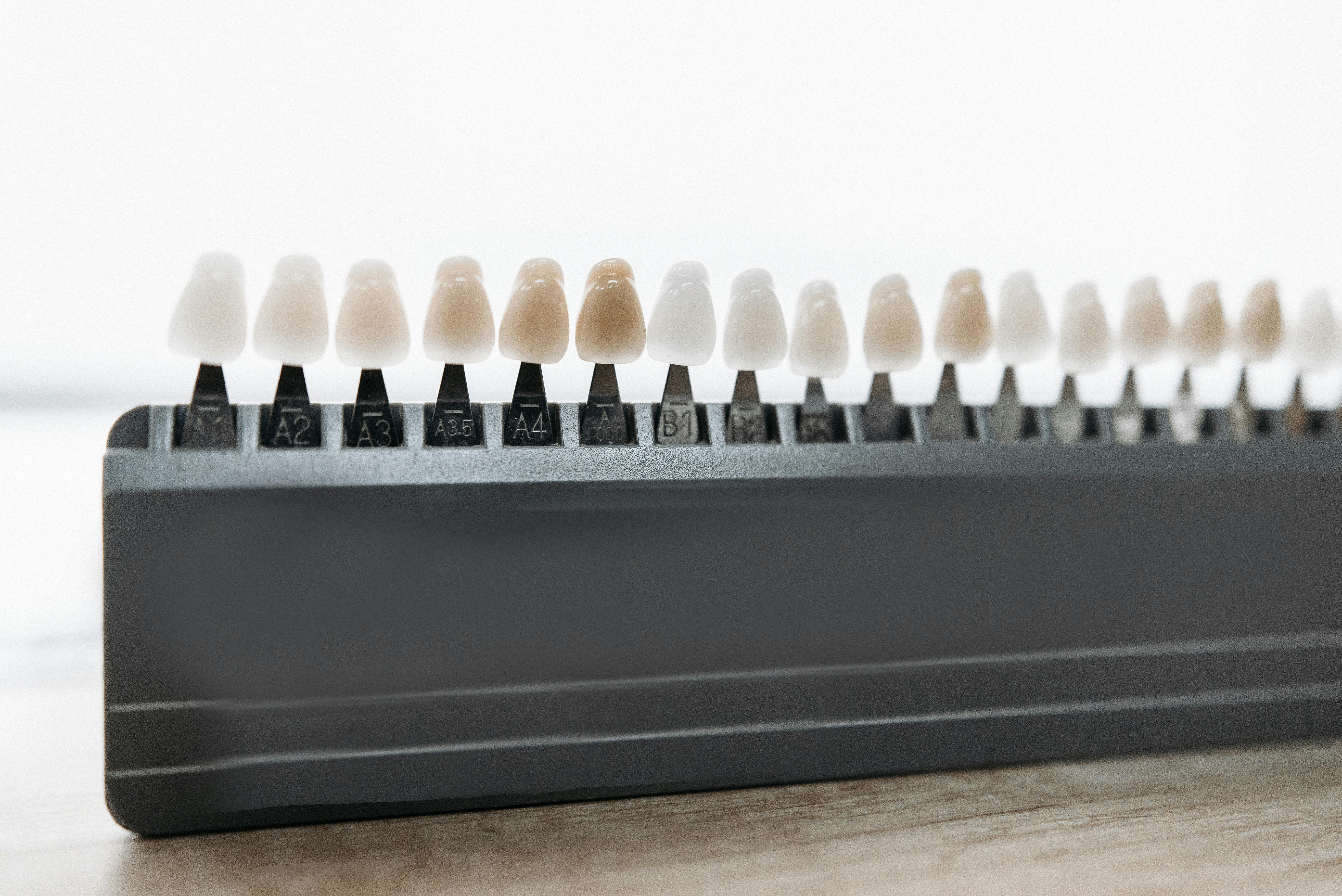Dental veneers are a great way to cover up tooth imperfections such as discoloration. Are they a permanent solution, or do veneers stain, too? Some materials are better than others when it comes to avoiding veneer discoloration. And a lot depends on personal habits and oral hygiene.
If you’re considering veneers, you’ll want them to stay bright and shiny for a long time. Here’s what you need to know about veneer discoloration and whether whitening veneers is possible.
Tooth Stains and Whitening
Aside from your bones, tooth enamel is the hardest substance in your body. As strong as teeth are, they are filled with tiny crevices, ridges, and even hairline cracks called craze lines. This makes them porous, allowing things that cause stains to seep in.
Surface stains caused by food, beverages, or coffee can often be lightened with tooth whitening and bleaching agents, either at home or at a dentist’s office. Discoloration caused by antibiotics or tooth trauma can alter the composition of the tooth and may be permanent.
When stains can’t be removed through traditional methods, veneers are an option to cover discoloration, as well as masking other imperfections like chips or cracks. The patient can choose veneers several shades lighter than their original teeth for a new smile that looks and feels natural.
Do Veneers Stain Like Tooth Enamel?
Veneers are thin, shell-like covers that fit onto the front of the teeth. They may be made of porcelain or composite resin. Porcelain veneers do not typically get stains. Composite, on the other hand, can become discolored over time.
Porcelain Veneers
Porcelain veneers are stain-resistant, but they can seem discolored because of the method used to apply them. First, each tooth is prepared by scraping off some of its enamel. This creates a rough surface that allows a resin adhesive bonding agent that will hold the veneer in place to adhere better.
Unlike a natural tooth, the porcelain itself has a glassy surface and is not porous, but the bonding agent is. Stain-causing substances from food and drink can get into the bonding agent, and stains can show up along the outer edges of the teeth. This is especially true if the gums start to recede, exposing more of the bonding agent. It’s rare, but the problem may also be more noticeable if the veneers aren’t the proper size to cover the entire tooth surface to begin with.
Composite Veneers
Composite veneers are made of resin that is very similar to the bonding agent used to attach porcelain veneers. After preparing the tooth, the material is brushed on in layers and gradually molded into the desired shape.
Composite material is porous and therefore has the ability to stain. With proper care and maintenance, however, composite veneers can remain several shades lighter than one’s original teeth, especially if the natural teeth were badly discolored.
Avoid These Things for Clean Veneers

The same things that stain teeth also create composite veneer discoloration. These are the things most likely to take your veneers from pearly white to yellow, gray, or even brown:
- Dark colored drinks like coffee, tea, and red wine
- Bright colored foods like tomato sauce, cherries, and blackberries
- Spices like turmeric or curry
- Smoking or vaping
Good dental hygiene can go a long way to control the staining effects of these things on natural teeth, and the same is true for keeping clean veneers. For both porcelain and composite veneers, be sure to:
- Brush and floss regularly
- Use a soft toothbrush and non-abrasive toothpaste
- Use a straw when drinking colored liquids
- Rinse with water after eating or drinking colorful things
- Get regular dental checkups and cleanings
Options for Whitening Veneers
Your veneers may begin to look dull or stained despite maintaining good dental hygiene. Veneers do not respond to teeth whitening the way that real teeth do. In fact, using some strong, abrasive teeth whitening products may do more harm than good. Using anything too abrasive can dull the shine of veneers, making them lose some of the brilliance that makes them look like real teeth. Instead, it’s best to visit the dentist to discuss steps for keeping veneers white, which will likely include one of the following options:
- Get a professional cleaning. Veneers can collect food residue and plaque just like teeth, and need regular, thorough cleaning. And while whitening veneers with bleaching agents won’t get results, professional ultrasonic tools and polish made especially for veneers can do wonders.
- Replace the bonding resin. If your porcelain veneers are in good shape, it may be possible to replace or touch up small areas of the stained resin that’s showing around them.
Replacement May be Necessary to Get Clean Veneers
Despite best efforts to prevent veneer discoloration, severe staining and dullness are often signs that it’s time for replacement. Porcelain veneers are expected to last for 10 to 15 years, while the lifespan of composite veneers is 5 to 7 years. If veneer whitening measures just don’t seem to be working, it may be time to speak to your dentist about replacing them.
Choosing the Best Veneers For You
Many patients get veneers with the expectation that they will have a permanently bright, white smile. After all, one of the reasons to get them is to cover up stubborn stains that won’t budge with typical whitening methods.
Porcelain veneers come closest to meeting the goal of stain-free teeth. A set of well-fitted veneers should stay looking great for a decade or more. They should still have regular professional cleaning to keep their luster.
Composite veneers are more economical, but the trade-off is a shorter lifespan and the fact that they can stain just like natural teeth. With proper care, however, they can stay bright and clean for several years.
Options for whitening veneers are limited, but that shouldn’t scare you away from getting them. It’s important to choose the type of veneer wisely and understand the role that your personal habits play in keeping clean veneers. Being careful about what you eat and drink and quitting tobacco use will help. So will thorough brushing and flossing, and routine dental visits. Make an appointment with a dentist to learn more about how veneers can give you the smile you’ve always wanted. Our online database will help you make an appointment with a dental professional near you.


